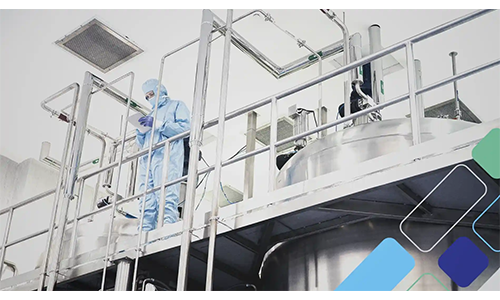Environment, health and safety (EHS) professionals in manufacturing are faced with the challenge of maintaining a safe workplace for employees across multiple facilities. This is in addition to maintaining compliance with any highly regulated industry standards on a daily basis.
EHS professionals play an integral role in ensuring reporting compliance, preserving environmental health and mitigating noncompliance risks across the entire business operations. This includes managing reporting deadlines and inventories for an extensive amount of chemicals, collecting environmental data for Tier II reports and maintaining Emergency Planning and Community Right-to-Know Act (EPCRA) compliance. When these tasks and data are scattered, it can feel like an impossible job for one person, or even a team of EHS professionals, to handle.
The reality of environmental compliance is that it requires proactive planning and collaboration from the corporate back office to the shop floor. Transforming and streamlining environmental compliance processes across the entire organization can relieve the otherwise heavy workload of an organization’s EHS professionals and improve overall productivity. This collaboration can also help business continuity through change management and ensure visible and trustworthy data.
3 Barriers to Environmental Compliance
Knowledge sharing and compliance systems allow companies to operate more efficiently. But before a company can dive into any knowledge sharing, its leaders must understand the obstacles that are currently making environmental compliance difficult; they must learn how to better harness relevant information across different facilities. Here are three areas where we often see logjams.
1. Data silos
One of the most significant obstacles for EHS professionals is gathering accurate and timely compliance data. Scattershot data monitoring and data collection across multiple facilities by multiple people open the door to reporting errors and missed deadlines.
Gartner reports that 94% of businesses believe the data they hold is inaccurate. Furthermore, poor data quality is presumed responsible for an average $15 million per year in losses. Not only can accurate data be lost in different locations, but employers are also wasting valuable human capital in the time spent collecting data. The more background knowledge shared between groups, the more visibility there is. This can result in more trust in the data and its sources.
By utilizing technology, specifically, a unified data system that centralizes all the environmental data for a given program area, EHS professionals can have a “single source of truth,” eliminating the need to start over every reporting cycle and ensuring they are more confident about the data they’re reporting.
2. EHS employee turnover
Without a centralized system for information, fulfilling environmental compliance reporting tasks can get complicated. Employees who monitor hazardous chemicals in individual facility operations play an important role in capturing relevant and auditable data.
If an employee takes another internal position or leaves the company altogether, that valuable institutional knowledge is lost. The Great Resignation, layoffs and high U.S. employee annual voluntary turnover rate could negatively impact safety departments because of non-standardized processes, whereby different people are constantly taking over the data collection and reporting tasks.
Establishing streamlined and standardized processes within environmental compliance programs is integral to knowledge sharing because it reduces switching costs and lost time due to employee turnover. This allows new employees to step in and pick up the slack quickly while maintaining data integrity.
3. Changing state and federal regulations
EHS professionals must adhere to ever-changing and highly regulated environmental laws. For example, the U.S. Environmental Protection Agency can add new chemicals to its extremely hazardous substances (EHSs) list and alter threshold planning quantities (TPQs) at any given time. If companies don’t subsequently meet these new or updated requirements, they may fall into non-compliance and face financial penalties.
TPQs limit the number of hazardous substances at a particular location to minimize the risk of an accident occurring. But in order to remain compliant, companies must be aware of all hazardous chemicals on-site at a given time. This can be challenging for individuals in a manual system; however, with electronic reporting, companies can quickly and easily determine if they exceed the stipulated TPQ for that particular material and keep audit-ready data on hand.
3 Ways to Overcome Obstacles
So, what’s the solution to overcoming these obstacles? Work smarter, not harder.
While this may seem to trivialize the issue, this cliché couldn’t be more accurate. EHS teams in a manufacturing setting should reconsider the way they approach data collection, especially as they experience high occurrences of growth and change management in their organization. It’s simply not sustainable to have siloed environmental data that is scattered across different locations.
Empowering employees with constant collaboration and a single source of truth for environmental data allows for strategic decision-making and proactive compliance. This can save on noncompliance risks, people hours and internal costs. Here are three ways automated reporting can help.
1. Connect with, and educate, the greater team.
Once leaders understand the issues that contribute to an inefficient environmental compliance system, it’s time to sync with the greater team.
According to a Gallup report, only 44% of employees see how their individual goals connect to organizational goals. This statistic highlights a major opportunity for business leaders.
When organizations empower EHS professionals to communicate with different teams across the organization, educate on regulatory expectations and explain laws that impact day-to-day work, they can naturally move the needle toward a more productive and compliant workplace. However, EHS employees can’t be the only ones prioritizing environmental compliance throughout the organization.
Executive-level support and collaboration with EHS teams are necessary to gain buy-in to new safety standards, thereby creating a stronger culture of workplace safety. And when business leaders allow all employees to learn more about regulatory requirements for environmental compliance and ask questions, those employees are more likely to be part of the solution.
2. Invest in tools that meet organizational needs.
If the goal is to increase shared knowledge between EHS, production and other teams (e.g., accounting and purchasing), channels need to exist for this information exchange to take place. Organizations can incorporate technology to radically transform how EHS professionals—and other compliance stakeholders—collect and share knowledge by taking these steps.
Here are four areas to consider investing in:
- Consider what parts of the data collection and report compilation process can be standardized and automated, then streamline those processes to simplify year-to-year Tier II report-building.
- Build dashboards to keep a bird’s-eye view of data. Dashboards that provide a 360-degree view of an organization ensure EHS teams and company executives are kept up to date.
- Implement EHS software that can eliminate menial, time-consuming tasks. Environmental management systems can free up EHS professionals’ time to allow them to focus on more strategic initiatives.
- Challenge EHS professionals to advise on technology decisions. As different solutions are tested, leaning on these employees to weigh in during the decision-making process increases the chance those tools and technologies are actually used. This, in turn, ensures the money an organization invests in digital tools enhances the employee experience and boosts overall productivity levels.
3. Ensure positive business and environmental outcomes.
EHS technology is an up-front investment but can help cut company costs over time. From a company culture standpoint, digital tools can play an important role in employee retention and performance. International Data Corporation's recent productivity study stated that companies with collaborative work environments see 30% less staff turnover—and 30% higher productivity per employee.
Maintaining environmental compliance is essential to companies for reputational, legal and ethical reasons. Organizations that invest in their environmental teams and find digital tools that support their enterprise needs reap the benefits. Knowledge sharing creates a well-informed, positive safety culture that catalyzes more cross-function between teams. In turn, this leads to a safer and more productive organization.
Luke Jacobs is CEO and one of the co-founders of Encamp, a provider of EHS compliance software.










































































